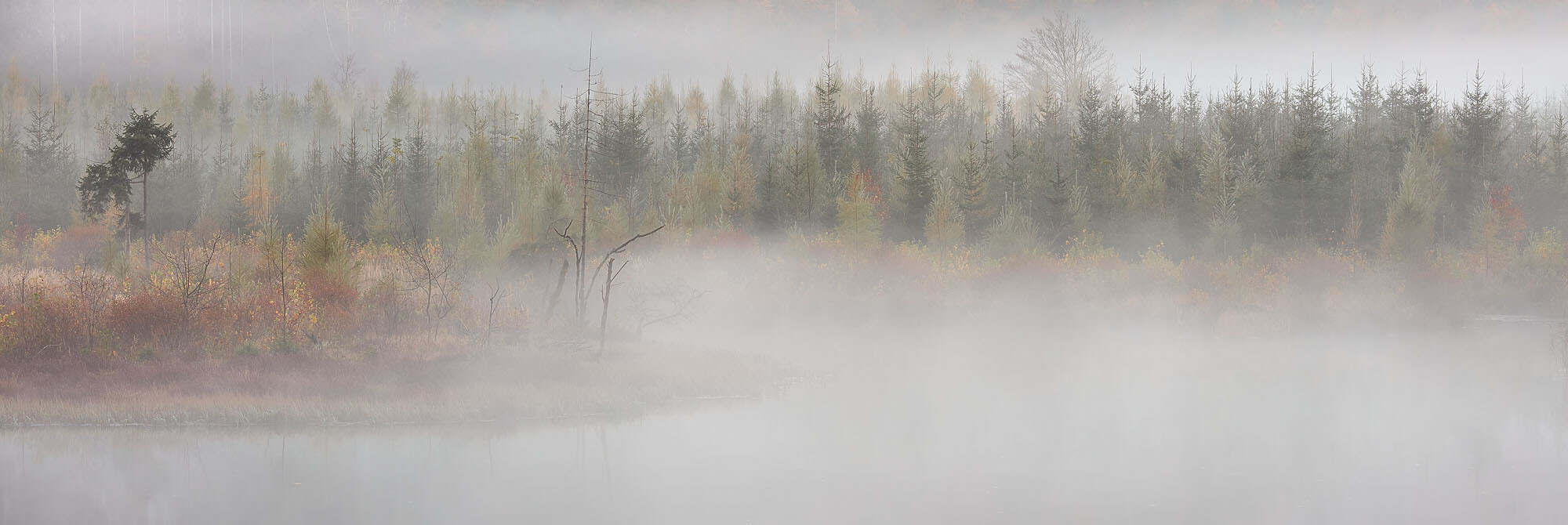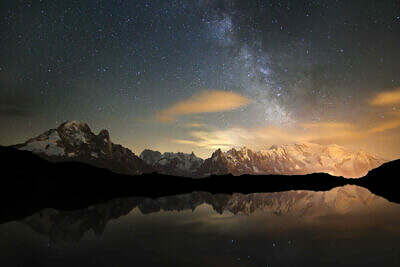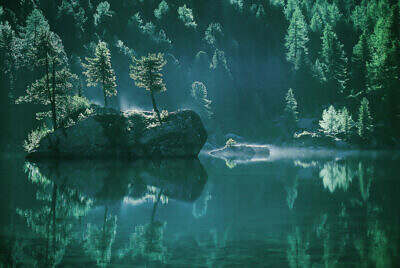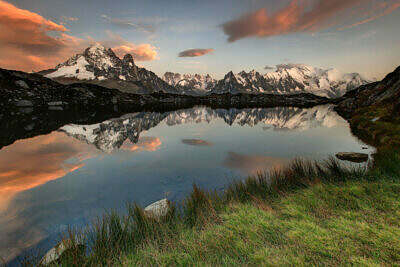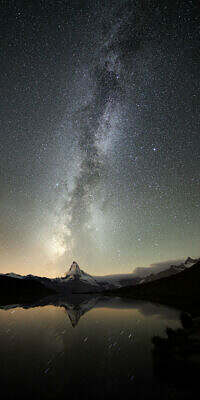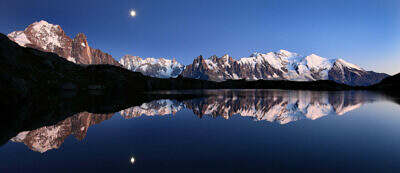The Almsee lake near Grünau in the Almtal valley belongs to the Salzkammergut region of the European Alps in Austria and is an idyllic mountain lake at the northern foothills of the Totes Gebirge mountain range, which is up to 2500 meters high.
Almsee is often enshrouded in dense fog. In the moments when the fog fades out the foreground and background, the marshy siltation zone with the adjacent forest looks like a floating landscape where the ancestors have found their homeland.

